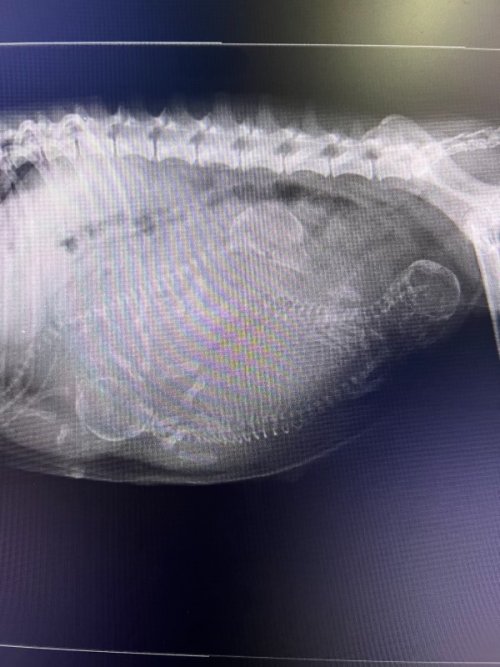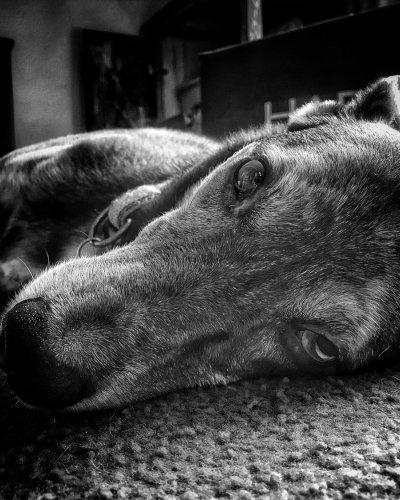Dog Pregnancy: How to care for your Pregnant Dog
Welcoming a new litter of puppies into the world is an excellent source of joy, although it is also a big responsibility for the owners. However, before the joyous puppies, owners must navigate the pregnancy, which can be stressful or worrisome. In this article, we will discuss canine pregnancy and how to care for a pregnant bitch.
Having puppies in the home is an absolute pleasure for many breeders, but the period before and after the dog gives birth can be stressful, time-consuming, and sometimes costly. Even before considering breeding, there is a lot of homework to complete, with health and DNA screening tests, temperament testing and compatibility matching. Having a clear understanding of the breed or breeds and their respective standards, health risks, and optimum state of physical fitness will help breeders better understand possible risks or complications associated with the pregnancy. The responsibility to breed puppies with the best chance of growing up healthy and well-socialised whilst facilitating the pregnancy and caring for the bitch is no small feat.
The more you plan and prepare before and during the pregnancy, the more ready you'll be when the time for whelping comes.
Maturity
Female dogs reach sexual maturity around 10 to 12 months; small breeds may mature earlier, and giant breeds may develop later. However, since sexual maturity often precedes physical maturity, it's essential to talk to your Vet to ensure your bitch is physiologically ready to carry a litter of puppies.
How Long Does a Dog's Pregnancy Last?
After successful mating, the pregnancy begins, lasting an average of 62 to 64 days or approximately two months. Autumn P. Davidson from the University of California warns, however, that predicting the exact timing of whelping can be tricky because the breeding date doesn't always match the date of conception. Furthermore, the length of pregnancy can also vary with breed and litter size. For this reason, 62 days of pregnancy are always taken approximately.
Dr Jerry Klein from the American Kennel Club explains that during the first month of pregnancy, the fertilised egg enters the uterine horn and embeds itself in the lining. After that, fetal growth is rapid, doubling in size every seven days.
How to Tell if Your Dog is Pregnant?

If you have planned a pregnancy or are suspicious of an unplanned pregnancy, then taking your dog to the vet clinic will be the first step in detecting a pregnancy. Your Vet will perform one of the following procedures depending on the stage of pregnancy:
Palpation: Approximately one month after the beginning of pregnancy, your veterinarian can palpate the abdominal region. If your bitch is pregnant, the puppies will feel like little balls, which, depending on the breed, can be the size of golf balls or grapes. However, it's advisable not to do this yourself, as the wrong pressure could harm the puppies.
Ultrasound: A vet can perform an ultrasound 25 to 35 days after conception. During this period, the ultrasound will detect heartbeats and give an estimated number of puppies the bitch is carrying. In addition, an ultrasound examination may help detect abnormalities.
Hormone test: A canine pregnancy hormone test can detect pregnancy from approximately 25 days after conception. This test works by detecting the presence of the relaxin hormone, which is only produced during pregnancy, thus making the test quite accurate.
X-ray: One of the most effective ways to confirm pregnancy in dogs is an x-ray. This method is frequently used to determine the number of expected puppies and is performed relatively late in pregnancy (around 50 days into pregnancy). Before this time, in the earlier stages of pregnancy, the puppies' bones are too small and lack density and structure to be observable via x-rays.
Veterinarian tests, although the most accurate, are not the only way to confirm pregnancy—pregnant dogs often show changes in behaviour. Early signs of pregnancy that you might detect on your own are an increase in appetite, weight gain, an increase in nipple size, swollen belly, increased fatigue, nesting behaviour, occasional irritability, or more affectionate behaviour. Although, occasionally, these signs are associated with a phantom pregnancy, which is where the bitch has all the signs of pregnancy, including physical and behavioural changes, without actually being pregnant.
How to Care for a Pregnant Dog?

Your dog will require special attention during pregnancy (and immediately after giving birth). This includes changes to; diet, exercise, environment and also trips to the vet.
Nutrition
One of the most important things for your dog during pregnancy is that it receives proper nutrition. A high-quality diet is required, so if it is already part of your dog's daily routine in the first 40 days of pregnancy, you won't need to change anything in the diet. You can learn more about diet in this article: What is Chicken Meal in Dog Food?
However, in the last weeks of pregnancy, veterinarians recommend a slight increase in food intake—we start gradually and go towards the bitch consuming 35-50% more food than usual. This increase must be a slow process. Pregnant bitches should have their food divided into several smaller but frequent meals; this reduces the load on internal organs because overeating could be highly uncomfortable and potentially dangerous for the pregnant dog.
The reason behind the food increase lies in the intensive growth of puppies in the last three weeks of pregnancy. In addition, this rapid process exhausts the mother more energetically and compresses the stomach of the bitch. Therefore requires a high-density, easily digestible diet. Thus, an energetically and nutritionally well-balanced diet should be maintained throughout the gestation and weaning period.
Exercise
Normal exercise, i.e. the intensity to which the dog is accustomed, can be maintained in the initial weeks of pregnancy. However, it's essential to watch for signs of fatigue and allow your pregnant dog to exercise slightly slower or reduce the intensity if that suits her.
Dr Jerry Klein suggests that the exercises should not be overly strenuous once you notice the belly has increased, which happens during the last 30-20 days of pregnancy. At this stage of pregnancy, shorter but more frequent intervals of exercise will be better for your pregnant bitch, who is now using more energy carrying an increased load.
Visits to the Vet

Before mating, during pregnancy and once the puppies arrive, you should expect to visit your vet more frequently. Prepregnancy planning often includes a blood test and a prenatal checkup, where your vet will assess your bitches health. Since maternal health plays a significant factor in the health and well-being of the puppies, anyone breeding dogs should invest in both the physical and emotional health of a prospective mother.
Once the veterinarian confirms your dog's pregnancy, they will examine your dog for potential anatomical concerns—this is an excellent preventive examination to spot potential mechanical problems that could threaten normal whelping. In addition, some dogs may need a planned or emergency cesarean, so it's wise to discuss this with your vet early.
If the pregnancy is unplanned, this would also be an excellent time to discuss spaying with your vet; they can advise when it will be suitable to perform the surgy, which will prevent the risk of future surprises or unplanned pregnancies.
Whelping
Your dog's labour may be a stressful experience. Planning ahead and ensuring you have everything you need ready beforehand will help reduce your stress. Thus, you can focus on the immediate needs of the mother and puppies, taking appropriate action if complications arise.
Set up the whelping box at least a week before the expected birth. Some people purchase a ready-made whelping box, while others make a suitable DIY box. If you're making a DIY whelping box, please speak to experienced breeders and vets, who can help advise on how to keep both mother and pups safe.
Ensure the whelping area is warm, safe (so your dog can get in and out easily, but the puppies can't crawl out), and easy to clean. It's ideal to place it in a quieter area so the bitch can have peace. Then introduce it to her during the pregnancy so she will slowly get used to it and (hopefully!) choose it as the place for whelping. If, for some reason, she persistently refuses to give birth here, don't force her.
Having a ready supply of tools and accessories will help prepare you for the birth of the puppies. Some essentials are: clean, dry towels to clean newborn puppies, paper towels for wiping any mess, sterilised scissors and unwaxed dental floss for cutting and tieing umbilical cords, bulb syringe to clean puppies' nose and mouth, thermometer to check your dog's temperature before and after whelping, and your veterinarian's phone number and the number of a nearby emergency clinic.
Keep in mind that the bitch will instinctively clean each puppy after giving birth, biting the umbilical cords and clearing the puppy's airway, so we only need to intervene when things don't happen naturally or smoothly. So we are there to support the mother and be there if an unforeseen situation occurs (for example, if the mother fails to tear the placental membrane, which can lead to the puppy's suffocation after a few minutes).
If this is your first time breeding your dog, consult your veterinarian about your role during the whelping. Having at least one other adult there to assist you would be good.
Possible Whelping Complications
Some dogs will give birth to their puppies one after the other, while others will have several puppies and then take a break before resuming the birthing process. If this break lasts longer than two hours, it is wise to consult your veterinarian.
Sometimes during delivery, things can go wrong. If you experience any of these signs, call your veterinarian:
Your dog's rectal temperature dropped more than 24 hours ago, and labour has not yet started.
The mother shows signs of powerful contractions (high discomfort), but the first puppy does not arrive within two hours.
If you see that the dark green liquid is delivered before the first puppy (it is normal to deliver it once the puppies start coming out, but not before).
More than two hours pass between the births of the puppies.
The mother seems exhausted—prominent trembling, shivering and collapsing are all signs of serious complications.
Not all placentas came out.
Puppies aren't nursing.
Your dog does not show signs of whelping more than 64 days from mating.
Cesarian Scar Tissue
A caesarean section is a major surgical procedure to remove the puppies from the womb. A caesarean section may be performed as an emergency if there are complications during whelping. Most dogs recover quickly from this procedure, but if the labour before the operation lasted a long time and the bitch was already very tired, the recovery may be slower.
As with any incision into the body, your dog can develop scar tissue after a cesarean section. A complication of caesarean scar tissue is adhering of the scar to the uterus wall. Surgery may be required in complicated cases. However, most dogs will benefit from scar release therapy that promotes the healing of the tissue fibres and reduces the risk of fascial adhesions causing tension, pain, or restrictions in the body.
Canine Therapy Post-Whelping
After whelping, the bitch will need time to recover (while simultaneously caring for the puppies), so you should observe her more closely.
Since pregnancy and breastfeeding are extremely demanding on the body, it's a good idea to book your dog for a therapy session sometime after giving birth. This will prevent her from being left with any residual pain or minor dysfunctions that might cause problems in the future.
Manual therapies are best started after the puppies have been weened. We need to consider both the physical and emotional health of the mothers, and they can be very sensitive during the first few weeks after the birth of her puppies.
Thermal Imaging for Lactating Bitches
Puppies rely solely on their mother's milk for several weeks, after which they can begin to combine milk and solid foods. The high demand on the mother to produce milk, especially with large litters, can be exhausting. Severe complications from infection of the mammary glands, which produce and store milk, can happen. This infection, mastitis, can cause the rapid decline of maternal health; however, early detection and, thus, treatment can reduce the severity of the illness.
Mastitis is an inflammatory infection that can be detected using thermal imaging, often before other signs present. So if your bitch is not seeming herself, but no other clinical signs are presenting, it may be advisable to have a thermal imaging check arranged in conjunction with your vet visit.
X-ray photo supplied by: Superb Acres Cavalier King Charles Spaniels





Amee Nagy
2023-07-22 03:56
You always provide great examples and real-world applications, thank you for your valuable contributions.